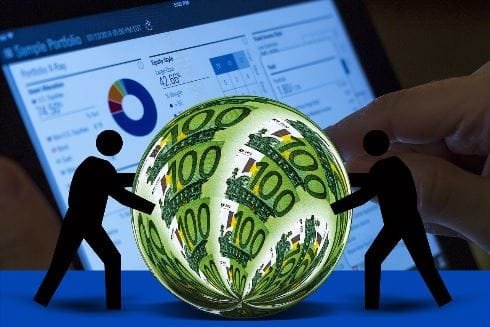How much did the pound drop after Brexit? This article looks at pound fluctuations against major world currencies after Britain’s vote to leave the European Union.

The UK voted to exit from the EU on 23 June 2016. A series of events after the vote in the transition period led to the up and down movement of the Pound. Britain’s vote took money markets by surprise as many people expected the choice to remain to take an edge over the decision to leave. Before the vote, the Pound had spiked against the Euro and the Dollar. However, after the result was announced, the Pound experienced the highest drop each day after the other than it had in the last 30 years. The Sterling fell harder against the dollar from $1.50 at the peak to ?1.32. On the other hand, it fell from $1.32 to ?1.20 against the Euro. At this point, Eurozone had problems from the French elections and Italian referendum.
Political Uncertainty
Panic continued to grip the market after the Prime Minister, David Cameron, decided to step down after the loss. The volatility continued with the leadership contest in the Conservative Party that resulted in Theresa May taking up the leadership by mid-July. This gave markets some stability with a slight rise against major currencies. This was the highest rise since the EU referendum.
However, the stability did not last long after May said that the UK would trigger Article 50 at the start of the year 2017. This article was triggered on 29 March 2017. It caused the Pound to drop ?1.11 against the Euro and $1.23 against the dollar. The Pound stabilized again after having experienced drops between July 2016 and the end of March 2017. However, the Pound did not return to the value before Theresa May took office.
Snap Elections
The currency markets were in for another shock when Theresa May called a snap election. However, unlike the other political events, the Sterling tended to get stronger with the announcement. This is because it was thought that she would get a majority in the parliament and boost her Brexit negotiations. For the first time since she joined the office, the Pound jumped over 2.5% to hit $1.24 against the dollar in October 2017.
Unfortunately, by 8 June, the Sterling fell 2% against the dollar and a similar percentage against the Euro to a low of $1.26 and ?1.12 against the Euro when the Conservative Party lost several seats in the general election. Theresa May was now too weak for her to run the government. This led to a coalition government with the Democratic Unionist Party. Trouble continued for the markets as pressure mounted for Theresa May to quit her post. She eventually gave in, later on, leading to more instability in the market. Traders saw the unstable leadership a threat to Britain getting a deal in the Brexit talks.
The Rise of Rates
The ensuing political instability from May leaving office led to a further drop in the Sterling value. There was also speculation that the volatility would affect the interest rates. Over the period, the weaker Pound had seriously driven up the cost of living and increased the price of fuel, food, and imports. Inflation also hit 3% by mid-September. This was the highest inflation in five years.
Consequently, the Bank of England raised the rates. This was the first raise in ten years on 2 November 2017. This led to a drop in the Sterling value to $1.30 against the dollar and ?1.11 against the Euro. Traders were worried that the economic growth had stagnated and there was a likelihood of future raise in rates.
Progress in Negotiations
There was a grim of hope after the UK and the EU started making progress in their negotiations. The money markets responded with the rise in Sterling value against $1.35. When the first phase of the Brexit was concluded, there were mixed reactions on the impact on the same on the economy. However, the general feeling was positive, which helped the Pound to remain high for some time and reaching a high of 1.14 Euros. However, when the euphoria created by the deal died down (after about five months), there was some uncertainty in the direction of phase two of the negotiations. This lowered the Sterling to $1.33 and ?1.13, respectively.
By the start of 2018, the Sterling had gained ground and traded over $1.40 for the first time. It remained that way for the better part of January thanks to the weak dollar, the anticipation of an excellent Brexit transition, and an expected hike in rates. Once a transition window was set to 21 months from March 2018, the Pound again gained against the dollar, reaching $1.43 by mid-April the same year.
Then, suddenly, the Pound fell against the dollar when it was determined that the rates would not be increased despite the economy growing at just 0.1%. By the start of May, it was selling at $1.35. By the end of the month, it was selling at $1.32 after pro-Brexit ministers said that they would be going for a clean deal.
No Deal Fears
In July 2018, David Davis resigned as the Brexit secretary. This was seen as a sign of a soft Brexit and the Pound climbed to $1.33. However, when Boris Johnson also resigned, the Sterling started to fall to a low of $1.29, as there was uncertainty over Brexit Negotiations.
Just over a month to the deadline for the deal, May announced that the parliament had delayed the deal vote. This led to the extension of the Brexit timetable. That caused the Pound to rise again to ?1.16 and $1.32 respectively. However, this did not last long. Britons again had a weak pound due to the parliament deadlock and subsequent resignation of Theresa May. It moved from $1.32 at the start of May to $1.22 in July, when the new PM, Boris Johnson, committed to a no-deal Brexit if no deal was in place by the end of October.
By September 2019, the Sterling had reached the lowest point at $1.196. However, when the no-deal Brexit was blocked, it rose to $1.234. It remained relatively stagnant despite another deal struck by the end of October 2019.
What does Will happen To the Pound after Brexit 2020?
The UK is in a transitional period as it tries to strike trade deals with the EU and other countries around the globe. The outcome of individual negotiations is likely to determine the direction of the individual negotiations. However, the Pound remains 15% low against major currencies such as the Euro and Dollars than the 2016 highs.
Pound Prediction after Brexit
There is hope that the Pound will not go down in the transition time after leaving the EU at the start of January. However, it may take years to get back to pre-Brexit values. The long-term impact after Brexit is still not known, but after a year or so, it will be clear where the country is headed.
Value of the Pound since the Brexit Graph
A graph that lists the major events after Brexit and their impact on the currency is the best way to show the Sterling progression after the referendum. The currency has been going up and down over time, depending on the event and expectations of the financial markets. This provides lots of data on how the market reacts to events touching on markets and currencies. You can also check the dollars to pounds (USDGBP) exchange rates over time.
Pound to Euro – Before and After Brexit
The Pound has had a marginal rise and falls against the Euro in the transition after the referendum. This has been caused by different reasons, among which are problems in the Eurozone from member countries. This has caused the Euro to go down in various instances. Second, trading was still happening long after the vote. The Financial Conduct Authority has given temporary permission for firms with relevant licenses to continue operating in Britain during the transition window. This has helped stabilize the Pound against the Euro.
Will the Pound Rise after Brexit?
However, the rise will not be fast as there are still several uncertainties in the directions of various deals. However, experts expect it to gain marginally or just stagnate against the major currencies throughout the year 2020. Other factors, such as the novel coronavirus, are expected to have a huge impact on the economy. Given that many other countries in the Eurozone and the US are grappling with its effects, it is likely that there will not be any significant gain.
Effect of the Brexit on the Pound
The Brexit has dealt a huge blow to the Pound. While the average drop in the rate against other currencies is about 15%, it had gone as low as 20% in the three years before Britain finally left the union. The future is not yet bright for the Sterling, as no breakthroughs have been made regarding trading with major powers around the globe. However, experts expect it to start rising again once the dust has settled on Brexit.







